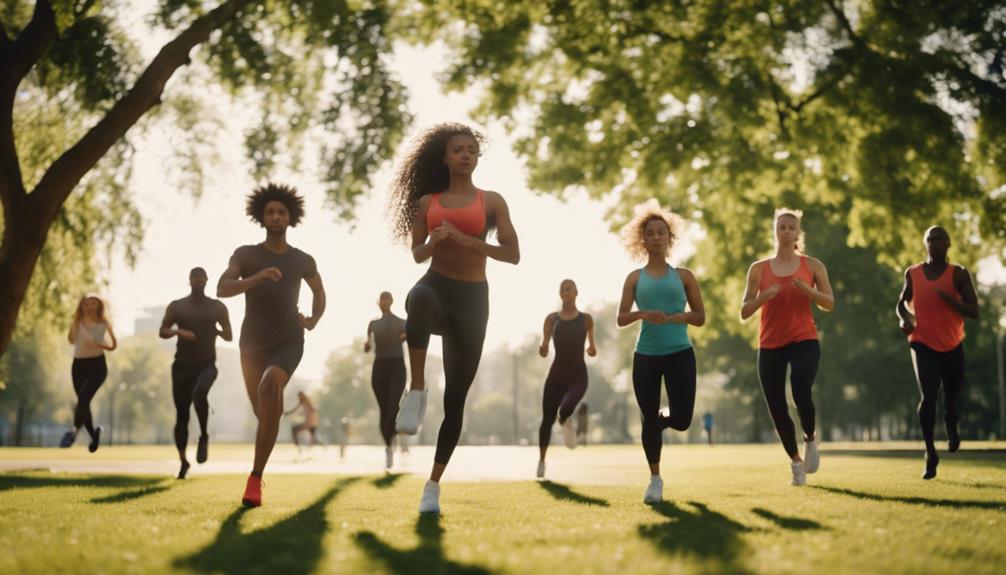
For athletes, whether seasoned or just starting out, ensuring their body is in peak condition is paramount. This is where sports physicals come into play. A sports physical, also known as a pre-participation exam (PPE), is designed to assess an athlete’s health and fitness level before they dive into their chosen sport. But what exactly happens during this examination, and why is it so critical? Let’s break it down!
1. What’s the Deal with Sports Physicals, Anyway?
Sports physicals are specialized medical exams that serve as a precautionary measure to ensure athletes are physically capable of participating in their sport without risking injury or health complications. While many people might think of these exams as merely a formality, they hold significant importance in an athlete’s overall health and performance. They evaluate not just the athlete’s current physical state but also their potential risk factors that could lead to injuries during practices and competitions.What Sports Have The Highest Injury RateWhere To Sell Old Sports Illustrated Magazines
These exams are often required by schools, sports organizations, and leagues before an athlete can participate in any activities. They help coaches and parents feel more confident that their young athletes can safely engage in the demanding physical activities that their sports require.
2. Why You Need a Physical Before Hitting the Field
Before stepping onto the field, court, or track, a sports physical ensures that you’re fit to play and helps catch any potential health issues that could pose a risk during athletic activities. Participating in sports puts significant stress on the body, and it’s crucial to confirm that your heart, lungs, and other vital systems are functioning well. A physical can identify health concerns such as asthma, heart murmurs, or musculoskeletal issues that might otherwise go unnoticed.
Moreover, many sports programs require a recent physical to participate. This requirement isn’t just a bureaucratic hurdle; it’s a safety measure that protects athletes. By ensuring that athletes are healthy, schools and organizations can minimize the risk of injuries and health emergencies, creating a safer environment for everyone involved.
3. The Key Players: Who Conducts Your Sports Physical?
Typically, a sports physical is conducted by a healthcare professional, such as a primary care doctor, pediatrician, or a sports medicine specialist. These professionals have the training and expertise to evaluate an athlete’s physical condition effectively. Depending on the athlete’s age and specific health needs, a doctor may also refer them to a specialist for further assessment.
In some cases, schools may partner with local clinics or healthcare providers to offer sports physicals on-site. This can be an excellent option for athletes, as it often simplifies the process and ensures that everyone has access to the necessary health evaluations. Regardless of where the physical takes place, it’s essential to have a qualified professional conducting the examination to ensure accurate results.
4. What to Expect During Your Sports Physical Exam
When you arrive for your sports physical, you’ll start by filling out some paperwork. This might include providing information about your medical history, any previous injuries, and details about your family’s health history. Being honest and thorough in this documentation is crucial, as it helps the healthcare provider make informed decisions about your health.
After the paperwork, the physical exam itself typically includes a series of evaluations, such as checking your height and weight, listening to your heart and lungs, and assessing your overall appearance. You may also undergo a series of specific tests tailored to your sport, which helps the provider gauge your readiness to participate.
5. Vital Signs: Measuring Your Heart and More
One of the first steps in a sports physical is measuring vital signs, which include your heart rate, blood pressure, respiratory rate, and temperature. These metrics give healthcare providers insight into your overall cardiovascular health and can help detect any underlying conditions that could affect your ability to participate in sports.
In addition to measuring vital signs, the provider will also assess your heart and lung function through a physical examination. This could include listening to your heart with a stethoscope and observing your breathing patterns. If any concerns arise during these assessments, further tests may be recommended to ensure you’re fit to play.
6. The Importance of Medical History in Sports Physicals
Your medical history plays a significant role in the sports physical process. During the examination, healthcare providers will ask detailed questions about any previous injuries, illnesses, or surgeries you’ve had. They’ll also want to know about any chronic conditions, like asthma or diabetes, that could affect your performance in sports.
This information is essential because it helps the healthcare provider assess potential risks and tailor their recommendations to your unique needs. For instance, if you have a history of concussions, they may advise a more cautious approach when returning to contact sports. The aim is to ensure that athletes can participate safely and effectively.
7. Strength and Flexibility: Tests You Might Face
As part of your sports physical, you may undergo a variety of tests aimed at measuring your strength, flexibility, and overall physical fitness. These assessments can include simple exercises like push-ups, sit-ups, or stretches to evaluate your range of motion. This helps to determine if you have the physical capabilities needed for your sport.
Additionally, some providers might conduct specific sport-related tests, such as agility drills or balance assessments. The results can help identify areas of weakness or imbalances in your body that need to be addressed before you start training or competing.
8. Common Health Issues Looked For in Sports Physicals
During a sports physical, healthcare providers look for a range of common health issues that could affect an athlete’s performance. They may screen for conditions like asthma, diabetes, and heart conditions, as well as musculoskeletal issues such as past injuries or joint problems.
In some cases, providers will also assess for risk factors associated with heat-related illnesses, especially for athletes participating in outdoor sports during warmer months. It’s essential to identify these health concerns early to ensure that athletes are fully prepared to handle the physical demands of their sport.
9. What Happens If You Don’t Pass Your Physical?
If an athlete doesn’t pass their sports physical, it doesn’t necessarily mean the end of their athletic career. Healthcare providers may identify specific health concerns that need to be addressed before they can participate. In many cases, they’ll provide recommendations for follow-up care or further evaluations to develop a plan for safe participation.
Additionally, providers may suggest modifications to training or competition, such as focusing on rehabilitation for an injury or implementing a tailored training program to improve fitness. Athletes should view this not as a setback, but rather as an opportunity to enhance their health and performance.
10. Tips to Prepare for Your Sports Physical Appointment
Preparation is key to making your sports physical as smooth and efficient as possible. Start by gathering relevant medical records, such as vaccination history and any previous medical evaluations. It’s also helpful to write down any questions or concerns you may have so you can discuss them with the healthcare provider during your appointment.
On the day of your physical, wear comfortable clothing and bring any necessary sports gear that might be needed for the physical tests. Don’t forget to stay hydrated and eat a light meal beforehand, as this can help you perform better during strength and flexibility assessments.
In summary, sports physicals are a crucial step for any athlete looking to participate safely in their sport. They help identify potential health issues, establish a baseline for physical fitness, and provide athletes with the necessary clearance to compete. By understanding what happens during these exams and preparing accordingly, athletes can ensure they are in top shape when it’s time to hit the field or court. So, lace up those sneakers and get ready to show off your skills!




